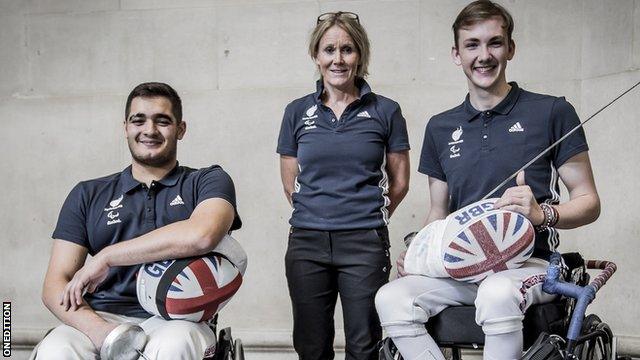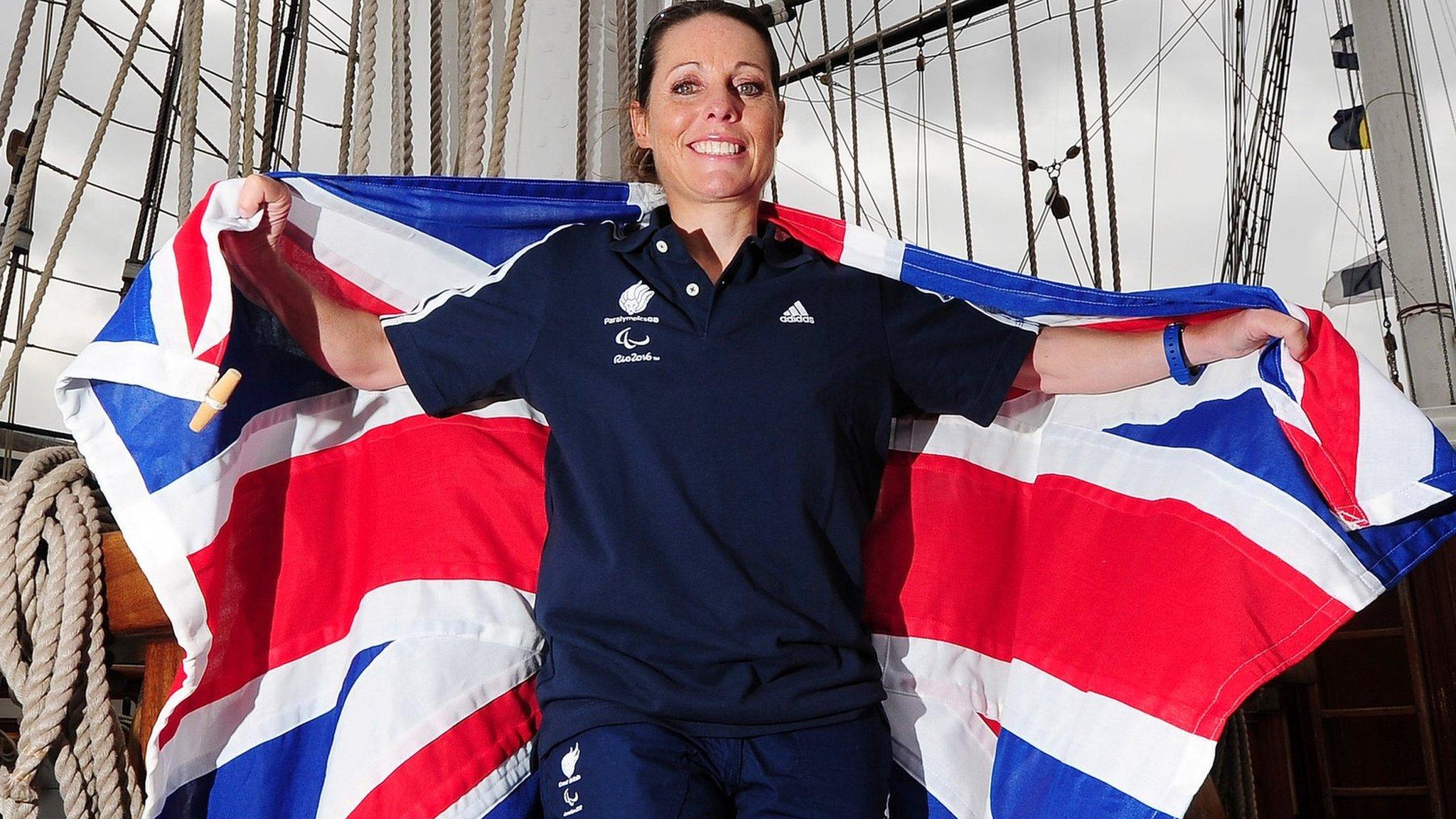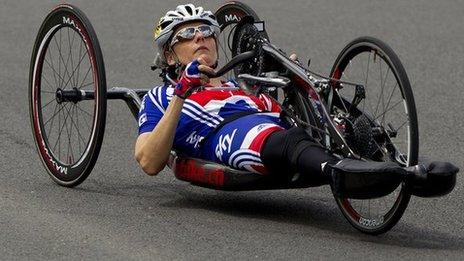Wheelchair fencing at the Rio 2016 Paralympics: All you need to know
- Published
Paralympic Games on the BBC |
|---|
Venue: Rio de Janeiro, Brazil Dates: 7-18 September Time in Rio: BST -4 |
Coverage: Follow on Radio 5 live and via live text commentary. |

Britain had just one competitor in wheelchair fencing at the 2008 Games in Beijing, but seven at London 2012
How does it work?
There are three disciplines in wheelchair fencing based on the type of sword used - the foil, the epee and the sabre.
In the foil event, fencers are only permitted to strike the trunk area of the opponent, while in the sabre and epee, anywhere above the waist is a valid target area.
Fencers record hits by striking their opponent cleanly in the valid area, with successful hits recorded by the electronic equipment.
During a contest, the fencers' wheelchairs are fastened into metal frames on the floor, allowing freedom of the upper body only.
Bouts last a maximum of four minutes in the preliminary stages, with victory going to the first fencer to score five valid hits or the one with the most hits at the end of the four minutes.
Bouts in the first round of competition are the best of nine hits. The top competitors are promoted to a direct elimination, where bouts are awarded to the first to get to 15 hits.
In the knockout stages, bouts consist of three rounds of three minutes. The winner is the first to score 15 hits, or the highest scorer at the completion of the contest. In the event of a tie, an extra one-minute sudden death bout is held, with the first person to score a valid hit taking the contest.
Classification divisions are based on impairment, with Category A fencers having a good sitting balance, either with or without the support of their lower limbs. Athletes with a low level spinal lesion, athletes with double above the knee amputation and comparable impairments can compete in this class.
Category B fencers are more impaired. They have a fair sitting balance and an unaffected fencing arm. They most often have paraplegia or incomplete tetraplegia with fencing arms that are minimally affected.
Who are the British medal hopes?
Piers Gilliver and Dimitri Coutya represent Great Britain, having both made massive strides in the sport over the past four years. Gilliver, who is a strong contender for success in the epee event, has won World Championship silver and both he and Coutya have landed World Cup medals over the last 12 months.
Who are the other medal challengers?
China dominated competition at London 2012 with six gold medals and will be bidding to do the same again.
But Italian teenager Beatrice Vio could be one to watch. Four years ago, aged 15, she was told by her coach at the time that she was too young to compete and instead was a torch bearer.
Post London, Vio, who had all four limbs amputated after contracting meningitis aged 11, has dominated the women's foil Category B event, winning world and European titles, and will be favourite for gold in Rio.
Did you know?
Britain's last wheelchair fencing gold medal was won by Caz Walton, who earned gold in the epee in 1988 - her 10th Paralympic gold medal.
ParalympicsGB London 2012 medals
None.
- Published23 August 2016

- Published5 September 2016
